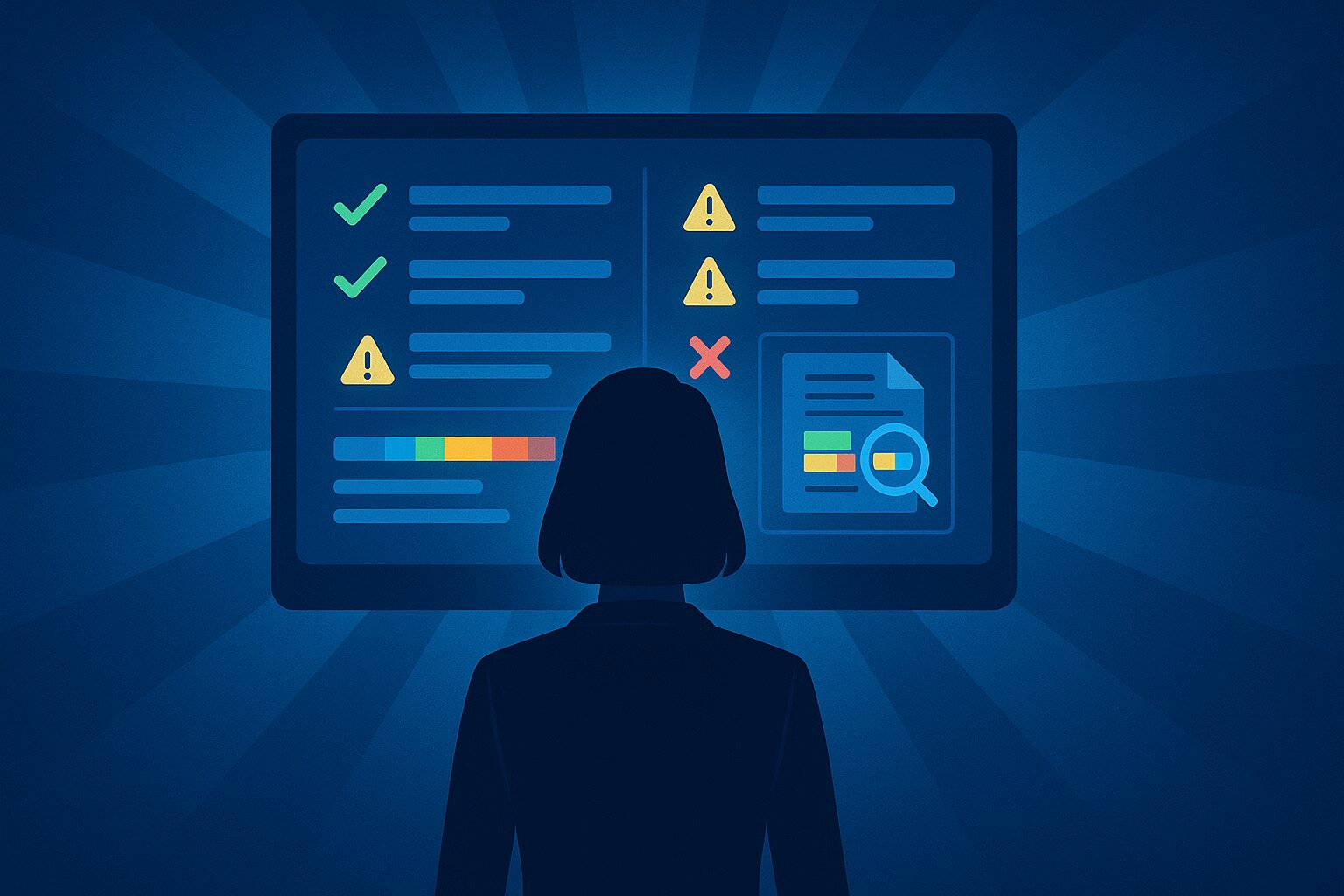Turning IFRS Disclosure Work from Brain Drain into Competitive Advantage
Author: Diana Rose, Head of ESG Solutions
The ISSB Standards are finding momentum, with IFRS S1 and S2 being adopted in 36 jurisdictions globally as we speak, and regulators expecting high-quality, fully evidence-linked disclosures (IFRS, 2025).
For ESG consultants and advisory firms, this has triggered a surge of detailed, repetitive work starting with essential but draining gap analyses that will only intensify in time. The burden of work falls on subject matter experts, creating demoralising workloads that increase employee turnover and sap the energy of teams that could instead be focused on high-value client work.
The good news is: it doesn’t have to be this way. Technology can turn this operational strain into a competitive advantage.
The burden of gap analysis
Gap analysis has become one of the most time-consuming parts of IFRS compliance. Every line of a disclosure needs to be checked against every requirement of IFRS S1/S2, the TCFD pillars, and often industry-specific SASB metrics. In many firms, it’s delegated to more junior staff who spend intense hours, for weeks on end, on repetitive checks that require a high degree of attention.
These reviews are mentally demanding and generally draining to advisory teams. A survey by the ACCP found that half of CSR and ESG professionals reported burnout, with expanding sustainability reporting demands cited as a major driver. For consultancies, this means low company morale, leading to high turnover rates and damage to capacity to deliver value-adding work.
This impacts quality too
When staff become overloaded with monotonous work and need to do it again and again over reams of draft disclosures, quality tends to suffer. Omissions, repetitions or contradictions can mean a client report is published with errors that damage credibility or invite regulator scrutiny. Senior staff are concerned about this, spending time re-checking reports to avoid errors, instead of focusing on higher-value work.
Adding to this, the new demands of IFRS means reporting pressures are no longer as seasonal as they used to be. Teams are handling more reports all throughout the year, giving them little time for recovery.
Technology as an assistant, not a replacement
Automating mind-numbing tasks doesn’t mean replacing teams of qualified people. It means amplifying their abilities, while freeing up their time and mental capacity for more nuanced, intellectual, high-value and inter-personal work.
Imagine an AI system that can instantly run thousands of checks on any document, based on specific regulatory requirements with source-linked evidence for every response. This would give your team a transformative, tireless assistant that takes on the repetitive part of the process, so your team could focus on review, judgement, strategy, and client engagement.
Insig AI’s IFRS Accelerator is designed to do exactly that. It works with any report format, whether Word, PDF, or HTML. Once a report is uploaded, it runs thousands of logic and language-based checks against IFRS S1/S2 criteria and other frameworks. In minutes, it produces an audit-ready gap analysis as an interactive dashboard, CSV and PDF. Every finding is linked directly to the original text so you can keep your human-in-the-loop to verify it easily in order to trust and explain the results.
It also gives your firm a business development edge. Advisory teams can walk into prospect meetings with tailored, high-value insights and peer group benchmarks. Simply upload a set of published or draft documents, select your framework and run an instant and explainable gap analysis.
Built for immediate impact; ready for what’s around the corner
This approach removes the slowest, most repetitive steps of the process. Junior staff can be freed from demoralising, time-consuming reviews, and instead contribute to higher-value analysis. Senior staff get scalable, structured outputs they can trust and verify, without needing to grow their headcount. And your business development team gets ready-made insights to bring into competitive pitches.
Insig AI’s team of ESG experts have set the solution up for IFRS S1/S2 and TCFD standards, but firms can make bespoke adjustments and even create new frameworks to reflect their clients’ priorities and materiality and their own judgment calls. The system is also kept up to date with the latest iterations of international reporting frameworks including CSRD, SASB and TNFD.
It’s powered by Insig AI’s in-house ESG regulatory experience, data and AI engineering expertise and proprietary dataset of 100,000s of ESG disclosures. The platform leverages the best available technology tools to deliver instant, scalable and traceable insights you can trust to accelerate and enhance your own expertise and capabilities
The result for teams
By removing the most draining part of the work, consultants can see three direct benefits:
1) Protect people from burnout and attrition risks, cutting gap analysis times by at least 60% and enabling benchmarking that’s almost impossible to do manually
2) Be more competitive in pitches by walking in with fast, compelling gap analyses and visual peer group comparisons
3) Improve advisory services to clients by generating high-value insights quickly and at scale with every recommendation backed up with complete, regulatory-aligned evidence
Our team is here to help
Interested in seeing a live demo? Get in touch with our team and see how the IFRS Accelerator can bring immediate value.
